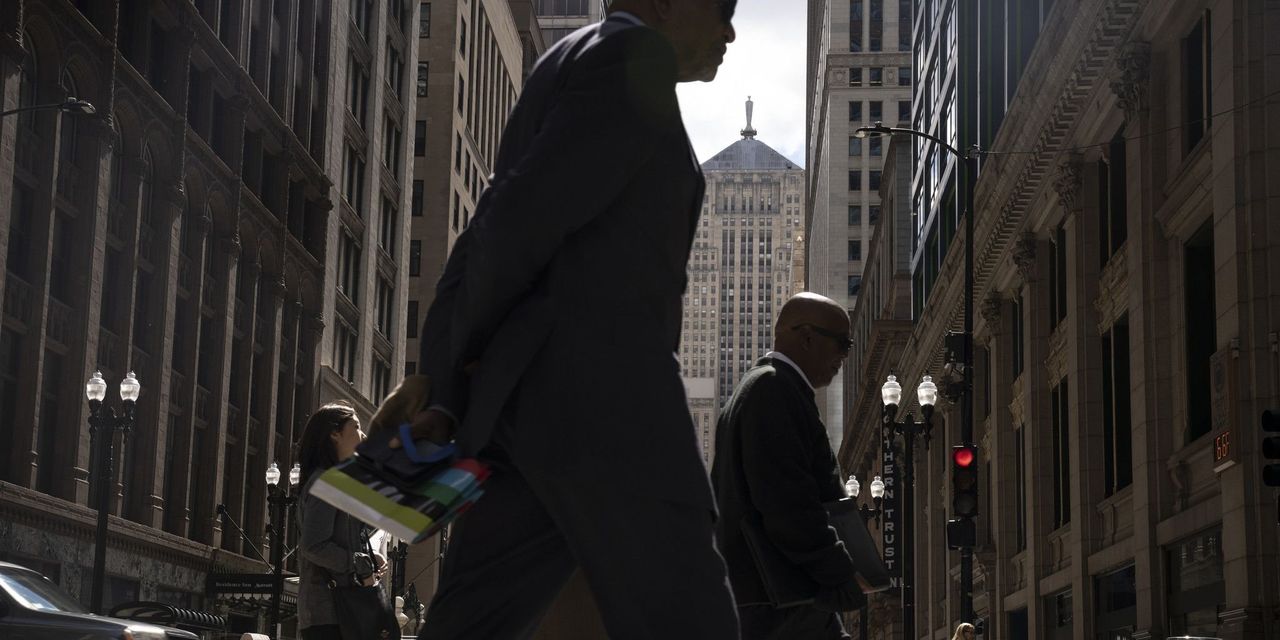Chicago is offering financial aid to developers willing to convert aging office towers into residential buildings, a new program that will serve as a test case for other cities looking to promote office conversions.
City officials announced last week that they will provide tens of millions of dollars in grants to rehabilitate the LaSalle Street corridor. Since the outbreak, however, the strip’s empty streets and towers have come to symbolize the slow pace at which workers are returning to office buildings.
Chicago is hoping to create 1,000 apartments in the first phase of the program, at least one-third of which will be affordable for low- or moderate-income people, and the projects could begin next year.
Chicago Mayor Lori Lightfoot said last week: “We have to do everything we can to get this corridor back.”
Office occupancy rates in many cities are still less than half of what they were before Covid-19 hit, and other state and local governments are looking to convert offices into housing.
California Governor Gavin Newsom signed legislation last week to speed up zoning and convert properties such as office parks and shopping centers to housing. A task force established by New York City Mayor Eric Adams is studying grants, zoning changes and building code amendments that would spur such investments. “We’re looking at everything,” said Dan Garodnik, chairman of the city planning commission and head of the task force.
Members of Congress have introduced legislation to provide tax credits for conversion projects. David Downey, president of the International Downtown Association, which supports the bill, said the benefits are modeled on historic tax credits available to buildings 25 years old and older.
These programs reflect the recognition that the healthiest downtown areas from the pandemic are residential, office, and retail, while the most disadvantaged are primarily all offices.
As developers transform decades of outdated downtown office and apartment buildings, there are challenges that keep these projects from continuing on a larger scale.
Most commercial districts lack grocery stores, dry cleaners, and other amenities that people need in residential areas. Many office buildings, especially those built after World War II, could be designed with apartments on floors larger than a football field with windows, bathrooms and kitchens. Projects typically require city zoning and building code changes.
Still, conversion projects are starting to look more attractive to developers because the pandemic and new workplace styles have driven significant declines in office-building prices.
In cities like Washington, D.C., office buildings that sold for $500 a square foot before the pandemic are now selling for $200 a square foot, said Post Brothers CEO and co-founder Michael Pestronk. His company has completed four office conversion projects and is looking into other cities, including Philadelphia and Washington, D.C.

The office relocation is part of a broader revitalization plan for LaSalle Street in Chicago.
Photo:
Christopher Dilts/Bloomberg News
Developers planning conversions along Chicago’s LaSalle corridor will benefit from lower office prices. Three buildings are for sale, and about a half-dozen others are in delinquent or in foreclosure, according to CoStar Inc.
“There is a very unique opportunity to find good-value properties for redevelopment,” said Samir Mayekar, Chicago’s deputy mayor.
Featured in movies like “Ferris Bueller’s Day Off” and “The Untouchables,” LaSalle Street is known as the historic home of the Chicago Board of Trade and many of the city’s largest banks and law firms. The corridor began to decline even before the outbreak, as some of its larger tenants migrated to newer buildings along the Chicago River.
Share your thoughts
Do you think commercial real estate in Chicago and other urban centers can be successfully converted to residential properties? Why or why not? Join the discussion below.
The district has been hit hard by a weak back-to-office push, slow rents and many office tenants’ preference for modern buildings with more amenities. The corridor has nearly 5 million square feet of vacant commercial space, more than any other part of the central business district, city officials said.
The office conversion is part of a broader revitalization plan for Chicago’s LaSalle Street, which includes building lobbies for culture and entertainment and attracting grocers, restaurants and other residential-oriented retailers.
The city is offering federal and state tax credits and grants to pay for the change. Projects qualify for a tax-increment financing program that, until recently, has been used primarily for infrastructure and other public improvements rather than private development.
Mayor Lightfoot said only those projects meet the city’s affordable housing goals.
“This is not a corporate security story,” Mr. Mayekar said.
Write to Peter Grant at peter.grant@wsj.com
Copyright ©2022 Dow Jones & Company, Inc. All rights reserved. 87990cbe856818d5eddac44c7b1cdeb8





